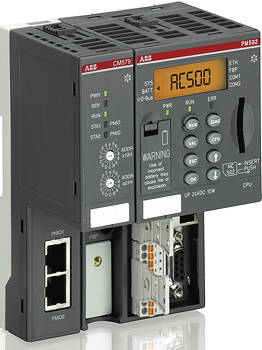The PLC is a variant of ABB's AC500 modular PLC, and most AC500 modules are are now available in XC (eXtreme Conditions) versions. The XC PLCs run the same program code as the standard AC500, allowing users to migrate easily to more robust installations, and simplifying development of large systems that need controls for both standard and extreme conditions. The mechanical dimensions and electrical connections are the same as for the standard AC500, allowing existing panel layouts and wiring harnesses to be re-used.
This inter-range compatibility also extends to ABB's safety PLC, the AC500-S-XC.
The built-in environmental protection ensures that control systems will operate reliably in hostile environments and opens up applications in areas such as mines, tunnels, water and wastewater plants, cranes, offshore platforms and wind turbines. The PLC “allows automation to be sited right where the control I/O is needed,” says ABB's Thomas Boenig.

ABB's new PLC is designed to operate reliably in extreme conditions
The PLCs can operate in temperatures from –30 to +70°C, with reliable start-ups in temperatures as low as –40°C. Their circuit boards are coated against high levels of humidity and can tolerate high levels of vibration and shock – with accelerations up to 4g from vibrations up to 500Hz. The PLCs can be used at altitudes up to 4km and are protected against voltage surges, fast transients and electrostatic discharges.
Although the protection makes the PLCs more expensive, ABB says that they can simplify control system design, and can often be installed directly in the operating environment without enclosures or environmental protection. Potential savings include shorter design times, smaller bills-of-materials, reduced cabling, lower energy consumption (by avoiding the need for cooling or heating), and lower maintenance, filter and repair costs.

